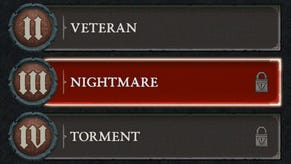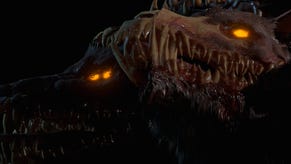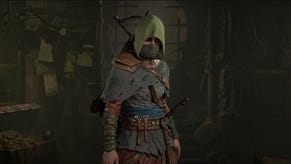Diablo 4 is a great PC port - except you need a 16GB graphics card to match PS5
Texture quality issues mar an otherwise excellent effort.
Diablo first hit PCs more than 25 years ago, and it has since become one of those rare franchises that just doesn't seem to get old. While there's a level of consistency across the various series entries, what really sets Diablo 4 apart is the fact that it was a multi-platform release on day one, and given how PC ports have fared lately, it would not be unreasonable to be wary of its quality. The happy news is that it's not difficult to run Diablo 4 across a range of PC hardware with excellent results - but there's a caveat to that: to achieve parity with PS5 in texture quality, a 16GB graphics card is required.
One of the first things to note before even purchasing Diablo 4 is that, like a number of other PC games today, it requires a launcher not called Steam - a battle.net account is required and even then, it requires an always-online connection, even if you're playing on your own. this is old news to franchise veterans, but newcomers deserve a heads up.
Upon starting the game, you're greeted with a slew of accessibility options, including everything from font size to text to speech, and more, which is great to see. Kudos to Blizzard. From there, first impressions remain rather positive as the menus thankfully have proper support for both keyboard and mouse, and controllers - which actually turns out to be a great way to play the game in general.
Looking at the graphics options, there's a lot of options to tweak, including support for DLSS or FSR2 - though the game makes the choice of which one is best for you. So Nvidia owners can't select FSR2, even though it is compatible. I assume this was done to make things simpler for less informed players, but I'd prefer the ability to make the choice myself. Still, the most important thing is that they are present. Overall I'd say that while the options are good, the menu itself is a mixed bag and it could really use some preview images, and VRAM usage stats. It also doesn't help that some of these descriptions seem inaccurate. For example, there's the suggestion that 32GB of system RAM is required for ultra textures - but it's not, 16GB is just fine. However, you do require a 16GB VRAM GPU for smooth play with ultra textures, which is not disclosed.
Moving on, there are the usual things you'd expect, like the ability to customise controls, tweak audio settings and the like, and for those curious, it does have native ultrawide support, but there is no proper fullscreen mode, so in order to change your in-game resolution, you have to change the resolution of your entire desktop.
Once you create a character (another new addition) and actually begin the game, an introductory sequence begins playing which includes pre-rendered video. Not only is the video low in bitrate, but it strangely plays at 24 frames per second, and with poor frame pacing to boot. I know 120Hz displays are much more common than ever, but it's still an odd decision. Even odder is the fact that the game's real-time cutscenes are capped at 30fps by default via a limiter that can be toggled off in the menu.
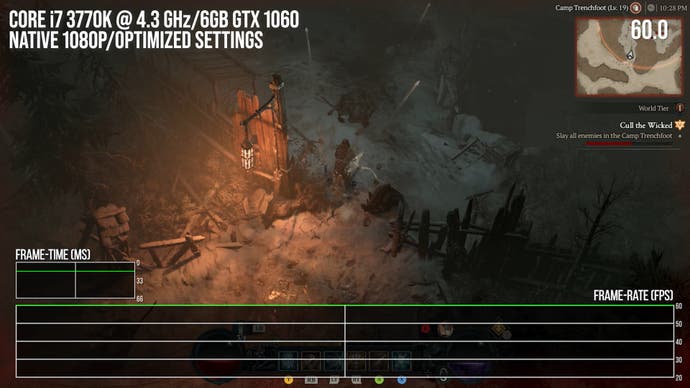
Looking at performance, it's no secret that Blizzard has traditionally designed its games to deliver a good experience across a wide range of PC hardware. I can confirm that it is possible to do that with Diablo 4, but it's also possible to have a really bad time, too, if you're not careful.
To demonstrate what I mean, a high-end system such a PC equipped with a Core i7 13700K paired with an RTX 4080 often hits over 100fps maxed out at native 4K and turning on DLSS can boost that number to well over 200fps. There's potential for even higher performance via DLSS 3 frame generation, but this can actually impact frame-rates instead. DLSS 3 is useful if you opt for DLAA anti-aliasing, however. The game can be quite performant on much older hardware, too: on an 11-year-old Core i7 3770K paired with a 6GB GTX 1060. I found that while 4K and 1440p were largely out of the question, it was indeed very possible to get a solid experience while making very few sacrifices at 1080p.
And this is where the story takes a familiar turn, as maintaining a smooth experience largely comes down to the texture quality you choose and ultra textures really does require a 16GB GPU, with egregious stutter on cards equipped with less VRAM. What's worse is how bad the high texture setting looks, as highlighted in the video above. Medium and low quality textures are also poor. Is a really 16GB GPU required? What about 12GB? I don't have a 12GB card handy, but thankfully the excellent ComputerBase has plenty, clearly showing a 12GB RTX 4070 is disadvantaged against a 16GB RX 6800 XT, a card that's otherwise in the same ballpark in performance terms. With that in mind, 8GB GPUs far worse if texture quality is maxed.
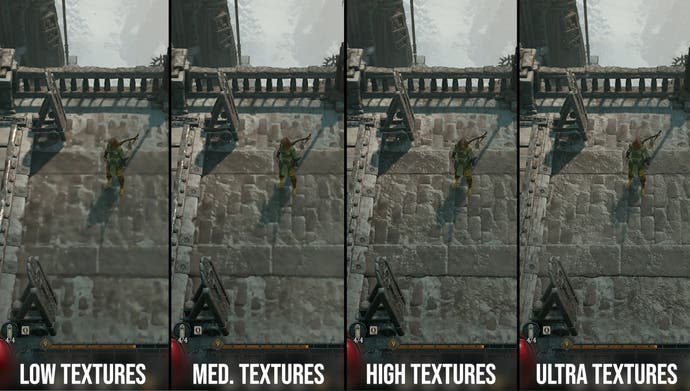
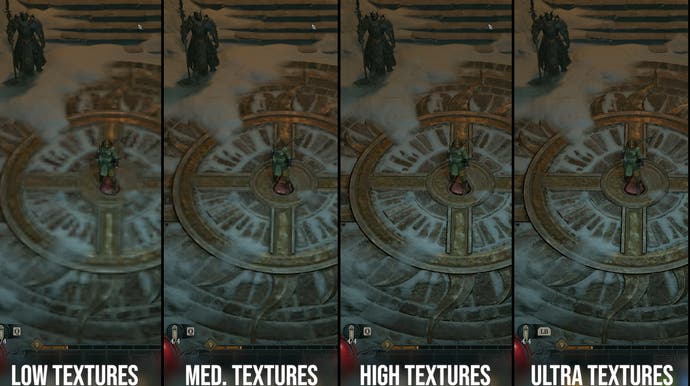
Playing at 4K on an RTX 2080 - an 8GB card - even with DLSS set to performance mode, I saw stuttering at 4K. And even dropping down to 1440p didn't really resolve the issue. Looking at usage data shows close to 15GB being used on an RTX 4080 with nigh-on full VRAM use on the 8GB card.. I can't say for certain if this is simply space being allocated or actual usage, but it certainly appears that ultra textures are very VRAM dependent as sadly, the only reliable way to stop this stuttering on an 8GB graphics card is to use high textures and enabling DLSS. The general view at Digital Foundry is that the quality impact on the high setting is problematic and we'd urge Blizzard to look at this as a matter of priority,
Optimised settings? There's little footwork required here as, aside from the textures, the game actually scales well. In fact, aside from the obvious suggestions, like turning on DLSS, there are just two settings I'd try turning down from the ultra preset if you want some decent gains with a minor impact to visuals. The easiest to justify first is SSAO because Diablo 4 is often so dark and the camera is so far away that it can be hard to find a meaningful impact visually, but the performance hit is undeniable. Just knocking this down from high to medium, gave me a 12 percent frame-rate gain.
The second setting to try turning down is shadow quality. Going from highest to high yields a 5.5 percent improvement without losing much in the way of fidelity. And lastly, in case I haven't made it clear by now, unless you have a card with a lot of VRAM, you will need to set textures to high for a consistently smooth experience. There are other ways to claw back performance, but I'd say that the impact to visual fidelity is too high. For example, clutter controls things like the thickness of grass. Turning this off completely can provide a potential boost of up to 20 percent. Screen-space reflections control reflections on things like water. This is another expensive one with a potential 16 percent performance increase when disabled.
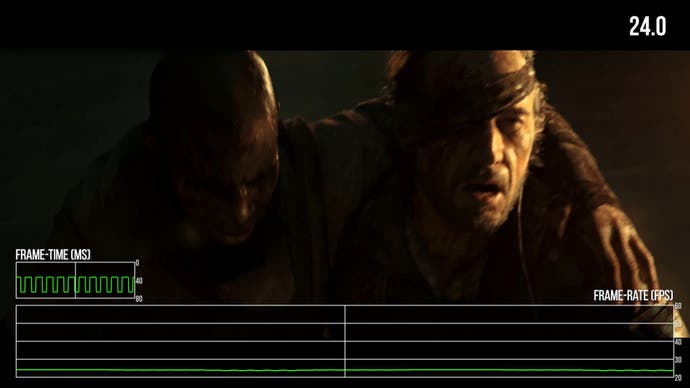
Dynamic shadows are another relatively expensive option, potentially providing a seven percent boost when off. These are used extensively in dungeons. Geometric complexity controls the distance at which meshes lose detail, and netted just a three percent uptick from high to low. Fog controls the thickness and quality of fog, mostly in swampy areas, going from high to low netted just a two percentage point boost. Soft shadows attempts to make shadows appear more realistic but in actuality it doesn't do much and I saw an FPS increase just over one percent with the option disabled.
Anti-aliasing controls the sample count used for AA. Turning it off saw a negligible visual or performance impact. Reflections control the accuracy of the reflections throughout the game. Going from high to low saw no performance gain. Water simulation quality changes how detailed the water is. Going from high to low again saw no gain to performance. Terrain geometry detail controls the amount of detail used to render terrain meshes and it's another with no performance hit. Shader quality has zero performance impact, either, but it's hard to say what it does exactly. The menu description says it controls various effects on a case-by-case basis, highlighting the poor level of information the menu gives to the user.
There are a couple of other things worth mentioning. I wanted to check for shader compilation stutter since I saw some people mentioning it, so I did a clean driver install, and ran through the beginning of the game twice. The results were a little surprising. One of the opening cutscenes is rendered in real-time, and with the 30fps cap removed on my mid-range pc, it performed nearly identically on both runs, complete with frame-rate dips and erratic frame times in the same places, and even hitches on the same camera cuts.
Once I got to actual gameplay, I finally saw an instance of shader compilation stutter the very first time I attacked. But then when other things happened where I expected more hitching, nothing happened. So, in short, yes, shader stutter compilation stutter appears to be present, but the impact is very minor in my experience.
One other notable thing that popped up a couple of times on different PCs were huge drops in performance that look very similar to the 500 millisecond frame-time spike from VRAM over-occupation, only these would happen for no apparent reason. In fact, I tried turning textures down to high, and it still happened on my high-end rig. I have seen some discussion that this may actually be a network issue, and that changing this Windows setting from private to public may solve it. I can't say for certain as I haven't experienced the issue enough to draw any conclusions, but if it is a network problem, just add it to the list of problems you can expect to see with always-online games.
Overall, Diablo 4 on PC can be the definitive way to experience the game, provided your hardware is up to snuff. It is very possible to get solid performance across multiple generations of hardware, and the game offers a ton of options to not only help it run well, but also make it accessible to a whole host of newcomers. Just watch out for that texture setting. We've seen other recent games improve the quality of their high and medium textures in patches, so it would be great to see the same happen here, but in the here and now, I'd say the PC version is still worth looking into if you're at all on the fence.








